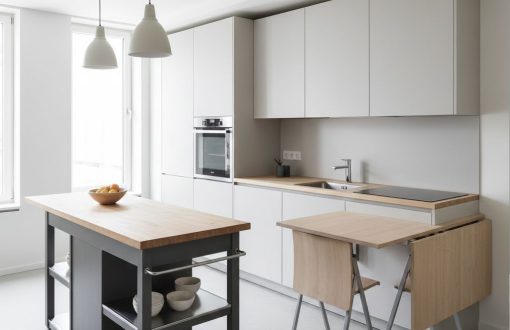Guide to Planning Bathroom Remodel

Step-by-Step Guide to Planning Your Bathroom Remodel
Remodeling a bathroom can be one of the most rewarding home improvement projects. Whether your bathroom is outdated, too small, or simply not meeting your needs, a remodel can transform it into a more functional and stylish space. However, the thought of remodeling might seem overwhelming. There are many decisions to make and steps to follow, from setting a budget to choosing the right materials and fixtures. But don’t worry – with a clear plan and the right guidance, you can navigate this process smoothly.
 Imagine walking into a bathroom that feels like your own personal oasis. The colors, the fixtures, the layout – everything just works. A successful bathroom remodel can achieve this, enhancing both your daily routine and your home’s value. But before you get to the fun part of picking out tiles and faucets, it’s important to start with the basics: planning. A well-thought-out plan is the foundation of any successful remodel. It helps you stay on track, avoid common pitfalls, and ensure you get the results you want without unnecessary stress or expense.
Imagine walking into a bathroom that feels like your own personal oasis. The colors, the fixtures, the layout – everything just works. A successful bathroom remodel can achieve this, enhancing both your daily routine and your home’s value. But before you get to the fun part of picking out tiles and faucets, it’s important to start with the basics: planning. A well-thought-out plan is the foundation of any successful remodel. It helps you stay on track, avoid common pitfalls, and ensure you get the results you want without unnecessary stress or expense.
This guide is designed to walk you through each step of the bathroom remodeling process in easy-to-understand language. We’ll start by helping you define your goals and set a realistic budget. Then, we’ll move on to planning your layout and design, hiring the right professionals, and obtaining necessary permits. We’ll also cover the construction phase and the finishing touches that make your bathroom truly shine. Along the way, we’ll point you to local resources and suppliers that can provide the materials and expertise you need.
Whether you’re dreaming of a sleek, modern bathroom or a cozy, traditional space, this step-by-step guide will help you turn your vision into reality. So, let’s dive in and start planning your bathroom remodel!
Step-by-Step Guide
Step 1: Define Your Goals and Budget
1.1 Determine Your Goals
The first step in planning your bathroom remodel is to clearly define your goals. Understanding what you want to achieve with the remodel will guide all subsequent decisions and ensure that the final result meets your expectations.
Functionality
Start by considering how you use your bathroom and what changes could improve its functionality. Do you need more storage space for towels and toiletries? Is the shower too cramped, or would a double sink better accommodate your family’s needs? Think about the daily frustrations you experience and how a remodel could address them. For example, if your current bathroom lacks sufficient lighting, adding more or better-placed light fixtures could make a big difference. Similarly, if you find yourself constantly battling for mirror space, a larger or additional mirror might be in order.
Aesthetics
Next, think about the style and appearance you desire. Browse through magazines, websites, and social media platforms like Pinterest to gather ideas and inspiration. Decide whether you want a sleek, modern bathroom with clean lines and minimalist fixtures, a cozy, traditional space with classic elements, or perhaps something in between. Having a clear vision of your preferred style will help you choose the right materials, colors, and fixtures.
Efficiency
In today’s eco-conscious world, many homeowners are also looking to make their bathrooms more energy and water-efficient. Consider incorporating fixtures like low-flow toilets and showerheads, energy-efficient lighting, and even underfloor heating systems. These not only help reduce your environmental footprint but can also lead to significant savings on utility bills over time.
1.2 Set a Budget
Once you have a clear understanding of your goals, the next critical step is setting a realistic budget. Your budget will dictate many of the choices you make throughout the remodeling process, so it’s important to establish it early on.
Research Costs
Start by researching the costs associated with different aspects of a bathroom remodel. This includes the price of materials (tiles, countertops, cabinets, fixtures), labor costs for hiring contractors and specialists, and any additional expenses such as permits and inspections. Online resources, home improvement stores, and consultations with professionals can provide you with a rough estimate of these costs.
Prioritize Spending
With an idea of the overall costs, prioritize your spending based on your goals. Decide where you’re willing to splurge and where you can save. For example, if a luxurious soaking tub is a top priority, you might allocate more of your budget to that while opting for more affordable tiles or fixtures. Having clear priorities will help you make informed decisions and stay within your budget.
Include a Contingency Fund
It’s also wise to include a contingency fund in your budget. Remodeling projects often come with unexpected expenses, such as hidden water damage or the need to upgrade outdated plumbing or electrical systems. Setting aside an extra 10-15% of your total budget for unforeseen costs will help ensure you’re not caught off guard and can keep your project on track even if surprises arise.
1.3 Consider Financing Options
If your remodel is extensive and your budget is substantial, you may need to explore financing options. Home equity loans, personal loans, or financing plans offered by home improvement stores can provide the funds needed for larger projects. Carefully consider the terms and interest rates to find the best option for your financial situation.
By defining your goals and setting a realistic budget, you create a solid foundation for your bathroom remodel. This planning phase is crucial as it informs every subsequent step, from design and material selection to hiring professionals and managing the construction process. With clear goals and a well-thought-out budget, you’re well on your way to achieving a successful and satisfying bathroom transformation.
 Step 2: Plan Your Layout and Design
Step 2: Plan Your Layout and Design
2.1 Assess the Current Layout
Before you start making any changes, it’s important to thoroughly assess the current layout of your bathroom. Understanding the existing configuration helps you identify limitations and possibilities.
Measure Your Space
Begin by taking precise measurements of your bathroom. Measure the dimensions of the room, including the height, width, and length. Make note of the positions of doors, windows, and any fixed features like plumbing fixtures and electrical outlets. These measurements will serve as the basis for your new design and ensure that everything fits properly.
Plumbing and Electrical Systems
Evaluate the current locations of your plumbing and electrical systems. Moving these can be expensive and complicated, so it’s often more cost-effective to work within the existing framework. Identify where your water lines, drains, and electrical outlets are currently situated. This will help you determine whether your desired changes are feasible or if they will require significant modifications.
2.2 Create a New Layout
Once you have a clear understanding of your existing layout, it’s time to create a new one that better suits your needs and preferences.
Space Optimization
Consider how you can optimize the space in your bathroom. This might involve reconfiguring the placement of fixtures, adding storage solutions, or even knocking down a wall to expand the room. Use graph paper or digital design tools to sketch different layout options. Think about how you move through the space and aim to create a logical flow that enhances usability. For example, placing the sink and mirror near the door can make your morning routine more efficient.
Fixture Placement
Plan the placement of key fixtures such as the toilet, shower, bathtub, and sink. Ensure that there is enough space around each fixture for comfortable use. For instance, the toilet should have at least 30 inches of space in front of it and 18 inches on each side for accessibility. The shower and bathtub should be placed where they can have sufficient ventilation and drainage.
Storage Solutions
Incorporate ample storage solutions into your layout. This could include built-in cabinets, shelving, or vanity units. Consider vertical storage options to maximize space, especially in smaller bathrooms. Adding niches in shower walls or utilizing the space above the toilet can provide additional storage without cluttering the room.
2.3 Select Materials and Fixtures
Choosing the right materials and fixtures is crucial for both the functionality and aesthetics of your new bathroom.
Materials
Select durable, water-resistant materials for your bathroom surfaces. For flooring, consider options like ceramic or porcelain tiles, which are both stylish and easy to maintain. For countertops, materials such as quartz, granite, or solid surface are popular choices due to their durability and variety of designs. When choosing wall coverings, tile is a practical choice for wet areas, while moisture-resistant paint or wallpaper can be used in other parts of the bathroom.
Fixtures
Decide on the type and style of fixtures you want to include in your remodel. This includes sinks, toilets, showers, bathtubs, faucets, and lighting. When selecting fixtures, think about both their functionality and how they fit into your overall design aesthetic. For example, a sleek, modern faucet can complement a minimalist bathroom design, while a vintage-style clawfoot tub can be the centerpiece of a more traditional look.
Color Scheme and Finishes
Choose a color scheme that reflects your style and creates the desired atmosphere. Lighter colors can make a small bathroom feel more spacious, while darker hues can add a touch of luxury and coziness. Coordinate your fixtures and finishes to create a cohesive look. For instance, if you choose brushed nickel for your faucets, consider matching it with other hardware like towel bars and cabinet handles.
2.4 Incorporate Universal Design Principles
Consider incorporating universal design principles to make your bathroom accessible and comfortable for all users, regardless of age or physical ability.
Accessibility Features
Include features such as grab bars, a walk-in shower, a raised toilet seat, and lever-style faucets that are easier to use. These elements can enhance safety and convenience without compromising on style.
Future-Proofing
Think about future needs as well. If you plan to stay in your home long-term, designing a bathroom that can accommodate changing mobility needs can be a smart investment.
By thoroughly planning your layout and design, you set the stage for a successful bathroom remodel. A well-designed layout ensures that your bathroom is both functional and beautiful, while thoughtful selection of materials and fixtures adds to the longevity and enjoyment of the space. Taking the time to plan carefully will pay off in a bathroom that meets your needs and enhances your home.
Step 3: Hire Professionals
Hiring the right professionals is a crucial step in ensuring the success of your bathroom remodel. Skilled experts can bring your vision to life efficiently and safely, helping you avoid costly mistakes and delays. This step involves finding reputable contractors, designers, and specialists who are experienced in bathroom remodeling.
3.1 Find a Contractor
The general contractor will oversee your project, manage the work, and coordinate with various specialists. Choosing the right contractor is critical to the success of your remodel.
Research and Recommendations
Start by asking for recommendations from friends, family, and neighbors who have recently undertaken similar projects. Personal referrals can provide valuable insights into a contractor’s reliability and quality of work. Additionally, use online resources like HomeAdvisor, Angie’s List, and Yelp to find highly-rated contractors in your area. Pay attention to reviews and ratings to identify potential candidates.
Get Multiple Quotes
Obtain detailed quotes from at least three different contractors. This will give you a sense of the average cost for your project and help you identify any unusually high or low estimates. A detailed quote should include a breakdown of labor costs, materials, timelines, and any additional fees. Be wary of quotes that are significantly lower than others, as they might indicate subpar work or hidden costs.
Check Credentials and References
Verify that the contractors you are considering are licensed, insured, and bonded. Licensing ensures that they meet the minimum requirements set by your state or local government, while insurance protects you from liability in case of accidents or damage. Ask for references from previous clients and follow up with them to inquire about their experience with the contractor. This can provide a better understanding of the contractor’s work ethic, reliability, and quality.
3.2 Work with Designers and Specialists
In addition to a general contractor, you may need to hire designers and various specialists to achieve the best results for your remodel.
Interior Designers
An interior designer can help you refine your vision, select materials and fixtures, and create a cohesive design plan. They can provide expert advice on color schemes, layouts, and finishes that align with your goals. If your budget allows, hiring an interior designer can make a significant difference in the overall aesthetic and functionality of your bathroom. Look for designers who specialize in bathroom remodels and have a portfolio that matches your style.
Plumbers and Electricians
Bathroom remodels often require significant plumbing and electrical work. Hiring licensed plumbers and electricians ensures that these critical components are handled safely and up to code. Plumbers will handle tasks like moving or installing new pipes, sinks, toilets, and showers, while electricians will manage wiring, lighting, and outlet installation. These specialists should work closely with your general contractor to ensure that all systems are integrated seamlessly.
Tilers and Carpenters
For intricate tile work and custom cabinetry, consider hiring experienced tilers and carpenters. Tilers will ensure that your flooring and wall tiles are installed correctly and evenly, while carpenters can build and install custom cabinets, vanities, and shelving. Skilled craftsmanship in these areas can significantly enhance the durability and appearance of your bathroom.
3.3 Communication and Contracts
Effective communication and clear contracts are essential to a smooth remodeling process.
Set Clear Expectations
From the outset, communicate your goals, budget, and timeline clearly to all professionals involved. Regular meetings and updates can help keep the project on track and address any issues promptly. Establishing open lines of communication ensures that everyone is on the same page and can collaborate effectively.
Detailed Contracts
Ensure that you have detailed contracts with each professional you hire. Contracts should include specifics about the scope of work, materials to be used, project timelines, payment schedules, and any warranties or guarantees. A well-drafted contract protects both you and the professionals by outlining expectations and responsibilities clearly.
Monitor Progress
While it’s important to trust the professionals you’ve hired, staying involved in the process helps ensure that your vision is being realized. Regular site visits and progress meetings allow you to monitor the quality of work and address any concerns as they arise. This proactive approach can prevent small issues from becoming major problems.
3.4 Final Inspections and Approval
Once the work is completed, conduct a thorough inspection to ensure that everything meets your standards and specifications.
Professional Inspection
Consider hiring an independent inspector to review the completed work. This provides an objective assessment and ensures that all work complies with local building codes and regulations.
Personal Walkthrough
Perform a detailed walkthrough with your contractor to verify that all elements of the remodel have been completed to your satisfaction. Check for any defects or unfinished work and create a punch list of items that need to be addressed. Ensure that all fixtures operate correctly and that there are no leaks or electrical issues.
Final Payment
Make the final payment only after all work has been completed to your satisfaction and any issues have been resolved. This ensures that the contractor is motivated to address any outstanding concerns promptly.
Hiring the right professionals and maintaining clear communication and detailed contracts are essential steps in a successful bathroom remodel. By taking the time to carefully select and manage your team, you can ensure that your project is completed efficiently, safely, and to the highest quality standards.
 Step 4: Obtain Permits and Order Materials
Step 4: Obtain Permits and Order Materials
Obtaining the necessary permits and ordering the right materials are critical steps in the bathroom remodeling process. These tasks ensure that your project complies with local regulations and that you have everything you need to complete the remodel efficiently.
4.1 Permits
Local Regulations and Requirements
Before you start any demolition or construction, it’s essential to understand the permitting requirements in your area. Most municipalities require permits for significant remodeling work, especially when it involves plumbing, electrical, or structural changes. Contact your local building department to find out what permits you need. Typical permits for bathroom remodels might include building permits, plumbing permits, and electrical permits.
Why Permits are Important
Permits ensure that your remodel complies with local building codes and safety standards. These regulations are in place to protect you and future occupants of your home by ensuring that the work is done correctly and safely. Working without the necessary permits can lead to fines, delays, and complications when you sell your home, as unpermitted work may not be recognized during the inspection process.
Application Process
Applying for permits usually involves submitting detailed plans of your proposed remodel, including the layout, plumbing, and electrical work. You may need to provide information about the materials you plan to use and the professionals who will be performing the work. The building department will review your application to ensure it meets all local codes and regulations. This review process can take several days to a few weeks, so it’s important to factor this into your timeline.
Inspections
Once you have your permits, your remodel will need to pass several inspections at various stages of the project. Inspectors will check the work to ensure it meets code requirements. Common inspection points include rough plumbing, rough electrical, and final inspection. Scheduling these inspections in advance and coordinating with your contractor can help prevent delays.
4.2 Order Materials
Lead Times
When ordering materials for your bathroom remodel, it’s crucial to consider lead times. Some items, like custom cabinetry, specialty tiles, or high-end fixtures, may take several weeks or even months to arrive. Order these items as early as possible to avoid delays in your project timeline. For commonly available items, ordering closer to the time you’ll need them can help reduce storage issues, but always allow a buffer in case of shipping delays or backorders.
Choosing Suppliers
Choose reliable suppliers for your materials. Local home improvement stores like Home Depot, Lowe’s, or Menards offer a wide range of options and often have experienced staff who can help you select the right products. Additionally, specialty stores and online retailers can provide unique or high-end materials that might not be available in larger chain stores. Using local suppliers can also support your community and reduce shipping costs.
Material Selection
Selecting the right materials is critical for both the functionality and aesthetics of your bathroom. Here are some key considerations for various components:
Flooring: Choose durable, water-resistant materials like ceramic or porcelain tiles, natural stone, or luxury vinyl. Ensure that the flooring is slip-resistant to enhance safety.
Walls: For walls, especially in wet areas, opt for water-resistant options such as ceramic tiles, glass tiles, or moisture-resistant paint. Consider accent tiles or mosaics to add visual interest.
Countertops: Popular materials for bathroom countertops include granite, quartz, marble, and solid surface. These materials are durable, easy to clean, and available in various colors and patterns.
Cabinetry and Storage: Select cabinetry made from materials that can withstand the humidity of a bathroom environment, such as solid wood with a moisture-resistant finish, MDF, or plywood.
Fixtures: Choose high-quality fixtures for your sinks, faucets, showerheads, and toilets. Look for features like water efficiency, durability, and ease of maintenance. Coordinating the finishes of these fixtures (e.g., brushed nickel, chrome, oil-rubbed bronze) can create a cohesive look.
Lighting: Good lighting is essential in a bathroom. Combine ambient lighting (e.g., ceiling fixtures) with task lighting (e.g., vanity lights) to ensure the space is well-lit and functional.
Order Quantities
Order slightly more material than you think you’ll need to account for mistakes, waste, and future repairs. For example, if you’re ordering tiles, add an extra 10-15% to your order to cover cuts and potential breakage. This ensures that you have a consistent supply of materials from the same batch, which can be important for items like tiles where color and pattern can vary between batches.
Storage and Handling
When materials arrive, store them properly to prevent damage. Keep tiles and other fragile items in a dry, safe place to avoid breakage. Ensure that wood materials are stored in a climate-controlled environment to prevent warping.
By obtaining the necessary permits and ordering your materials thoughtfully and in advance, you set the stage for a smooth and efficient remodeling process. This preparation ensures that your project complies with local regulations and that you have all the necessary components on hand when you need them, reducing the risk of delays and complications.
 Step 5: Demolition and Construction
Step 5: Demolition and Construction
The demolition and construction phase is where your bathroom remodel truly begins to take shape. This stage involves removing old fixtures and materials, preparing the space, and constructing the new layout according to your plan. Careful planning and execution during this phase are crucial to ensuring the success of your project.
5.1 Prepare the Space
Before any demolition begins, it’s essential to prepare the space properly to minimize disruption and protect the rest of your home.
Clear Out the Bathroom
Remove all personal items, furniture, and accessories from the bathroom. This includes toiletries, towels, shower curtains, rugs, and any decor. Clearing out the space entirely makes the demolition process smoother and protects your belongings from dust and damage.
Protect Adjacent Areas
Use plastic sheeting, painter’s tape, and drop cloths to seal off the bathroom from the rest of your home. This helps contain dust and debris, preventing it from spreading to other areas. If your bathroom is located near high-traffic areas, consider setting up barriers to reduce noise and disruption.
5.2 Demolition
Demolition involves tearing out old fixtures, tiles, cabinetry, and sometimes walls. This process can be messy and requires proper safety precautions.
Safety First
Ensure the area is safe by turning off electricity and water to the bathroom. Locate and shut off the main water valve, and switch off the circuit breakers that supply power to the bathroom. This prevents accidents and damage to your plumbing and electrical systems during demolition.
Removing Fixtures and Materials
Start by removing smaller fixtures like mirrors, towel bars, and light fixtures. Next, proceed to larger items such as the sink, toilet, shower, or bathtub. Be cautious when disconnecting plumbing fixtures to avoid damaging pipes. For built-in cabinetry and tile, use appropriate tools like crowbars and hammers to carefully dismantle these elements. If you’re removing walls, ensure they are not load-bearing before proceeding. This might require consultation with a structural engineer.
Disposal of Debris
Arrange for proper disposal of demolition debris. Renting a dumpster can be an efficient way to manage large amounts of waste. Alternatively, contact your local waste management services to understand their requirements for disposing of construction materials. Recycling and donating usable items like fixtures and cabinetry can also be a sustainable and charitable option.
5.3 Construction
With the old materials and fixtures removed, you can begin the construction phase, which includes plumbing and electrical work, structural changes, and installing new materials and fixtures.
Plumbing and Electrical Work
Begin by installing new plumbing and electrical systems according to your layout plan. This includes repositioning water supply lines, drains, and electrical wiring. Hiring licensed professionals ensures that the work is done correctly and up to code. Plumbers will handle tasks such as installing new pipes, faucets, showerheads, and toilets, while electricians will set up new wiring, outlets, and light fixtures.
Structural Changes
If your remodel involves structural changes like moving or adding walls, now is the time to complete this work. Ensure that any structural modifications comply with building codes and have been approved through the permitting process. Framing new walls or adjusting existing ones can create a more functional layout, such as expanding the bathroom space or adding a separate shower area.
Drywall and Flooring
After the plumbing and electrical work is complete and inspected, proceed with installing drywall. Use moisture-resistant drywall in areas prone to high humidity, such as around showers and bathtubs. Once the drywall is installed and finished, you can start on the flooring. Choose durable, water-resistant flooring materials like ceramic or porcelain tiles, luxury vinyl, or natural stone. Proper installation is key to ensuring longevity and preventing water damage.
Tile Work
Tile work is often a significant part of bathroom remodeling, covering walls, floors, and sometimes ceilings. Begin with the walls, starting from the bottom and working your way up. Use tile spacers to ensure even grout lines and a level installation. Once the wall tiles are set, proceed with the floor tiles, paying careful attention to alignment and spacing. Grout the tiles after they are securely set, and seal the grout to protect against moisture.
Cabinetry and Storage
Install new cabinetry and storage solutions. This might include custom-built vanities, medicine cabinets, and shelving. Ensure that all cabinetry is securely anchored to the walls and properly aligned. Installing storage solutions efficiently utilizes space and enhances the bathroom’s functionality.
Fixtures Installation
Install new fixtures such as sinks, faucets, showerheads, toilets, and bathtubs. Ensure all connections are watertight to prevent leaks. For sinks and faucets, follow the manufacturer’s instructions for proper installation. For showers and bathtubs, ensure that the drainage is correctly aligned and sealed.
5.4 Inspections and Adjustments
As the construction phase progresses, it’s important to conduct inspections and make necessary adjustments.
Professional Inspections
Schedule inspections for plumbing and electrical work as required by your local building codes. Passing these inspections is crucial before proceeding to the next steps. Inspectors will verify that all work complies with safety standards and building regulations.
Personal Inspections
Regularly inspect the work being done to ensure it meets your standards and specifications. Communicate with your contractor and address any concerns promptly. Making adjustments during the construction phase is easier than after everything is completed.
Adjustments
Be prepared to make adjustments as needed. Construction projects often encounter unexpected issues, such as hidden water damage or structural problems. Having a contingency fund in your budget can help cover these unforeseen expenses without derailing your project.
By carefully managing the demolition and construction phases, you lay the groundwork for a successful bathroom remodel. Proper preparation, skilled execution, and thorough inspections ensure that your new bathroom will be functional, beautiful, and durable. This phase transforms your plans and designs into a tangible space that meets your needs and enhances your home.
Step 6: Finishing Touches
The finishing touches are what bring your bathroom remodel to life, adding character, comfort, and style. This phase involves installing accessories, painting, decorating, and ensuring that every detail is polished and perfect. It’s the final step that transforms your functional bathroom into a beautiful and personalized space.
6.1 Painting and Wall Treatments
Selecting Colors
Choosing the right colors for your bathroom walls can set the tone and mood of the space. Lighter colors such as whites, soft grays, and pastels can make a small bathroom feel larger and more open, while darker shades like navy, charcoal, or deep green can add a touch of elegance and coziness. Consider how the colors will interact with your fixtures, tiles, and cabinetry.
Paint Types
Use high-quality, moisture-resistant paint designed for bathrooms. These paints are formulated to withstand humidity and prevent mold and mildew growth. Semi-gloss or satin finishes are ideal for bathrooms because they are easy to clean and more resistant to moisture compared to flat or matte finishes.
Accent Walls and Decorative Elements
Consider adding an accent wall to introduce a pop of color or texture. Wallpaper, beadboard, or wainscoting can add visual interest and depth to the room. If you opt for wallpaper, ensure it is suitable for high-humidity environments.
6.2 Installing Accessories
Mirrors
Mirrors are essential in a bathroom for both functionality and aesthetics. A well-placed mirror can enhance lighting, create a sense of space, and serve as a focal point. Consider adding a large mirror above the vanity or a decorative mirror on a different wall. Frameless mirrors offer a sleek, modern look, while framed mirrors can add a touch of style and complement your design theme.
Towel Bars and Hooks
Install towel bars, hooks, and rings in convenient locations. Towel bars are typically placed near the shower or bathtub, while hooks can be positioned on the back of doors or walls to provide additional hanging space. Choose finishes that match or complement your fixtures for a cohesive look.
Storage Solutions
Adding functional storage solutions keeps your bathroom organized and clutter-free. Install shelving units, medicine cabinets, or over-the-toilet storage to maximize space. Baskets, trays, and jars can help organize smaller items like toiletries and accessories.
Lighting
Good lighting is crucial for both functionality and ambiance. Install task lighting around the vanity mirror to provide bright, shadow-free illumination for grooming activities. Consider adding ambient lighting, such as ceiling fixtures or recessed lights, to ensure the entire bathroom is well-lit. Dimmer switches can offer flexibility in adjusting the lighting to create a relaxing atmosphere for baths.
6.3 Decorative Elements
Textiles
Textiles like towels, rugs, and shower curtains add warmth and color to your bathroom. Choose high-quality, absorbent towels in colors or patterns that complement your overall design. A plush bath mat or rug can add comfort and style, while a well-chosen shower curtain can serve as a statement piece.
Plants
Introducing plants to your bathroom can bring a touch of nature and freshness. Plants like ferns, aloe vera, and pothos thrive in humid environments and can add greenery and vitality to your space. Use decorative pots or planters that match your bathroom’s decor.
Artwork and Decor
Incorporate artwork and decorative items to personalize your bathroom. Framed prints, photographs, or decorative tiles can add personality and visual interest. Choose pieces that are moisture-resistant or protected with glass to prevent damage. Decorative items like candles, soap dispensers, and trays can also enhance the aesthetic and functionality of your bathroom.
6.4 Final Clean and Inspection
Thorough Cleaning
Once all the finishing touches are in place, perform a thorough cleaning of your bathroom. Remove any dust, debris, or construction residue from surfaces, fixtures, and floors. Clean the tiles, countertops, mirrors, and glass surfaces to ensure everything shines and looks pristine.
Final Inspection
Conduct a final inspection to ensure everything is installed correctly and functioning as it should. Check that all fixtures are securely in place, faucets and showerheads operate without leaks, and electrical outlets and lights work properly. Address any last-minute touch-ups or adjustments to ensure your bathroom meets your expectations.
Personal Touches
Add personal touches to make the space truly yours. This could be a favorite piece of artwork, a scented candle, or a decorative soap dispenser. These small details reflect your personality and make the bathroom feel like a part of your home.
By carefully attending to the finishing touches, you complete the transformation of your bathroom from a construction site to a stylish and functional space. This final phase is where your design choices come together to create a cohesive and inviting environment. The attention to detail ensures that your remodeled bathroom not only meets your practical needs but also provides a sense of comfort and satisfaction every time you step inside.
Step 7: Local Resources and Suppliers
Leveraging local resources and suppliers is a key component of a successful bathroom remodel. Local businesses can offer unique products, personalized service, and faster turnaround times, along with the added benefit of supporting your community. This step involves identifying and utilizing local resources for materials, fixtures, professional services, and waste disposal.
7.1 Finding Local Suppliers
Home Improvement Stores
Large home improvement stores such as Home Depot, Lowe’s, and Menards are valuable resources for a wide range of materials and fixtures. These stores typically stock everything from tiles and plumbing supplies to vanities and lighting fixtures. They also provide services like cutting materials to size and renting tools, which can be incredibly convenient. Their staff are usually knowledgeable and can offer advice on products and installation techniques.
Specialty Stores
Specialty stores offer a broader selection of high-quality and unique materials that might not be available at larger chains. For instance, tile shops, plumbing supply stores, and lighting boutiques often carry exclusive or custom items. The staff in these stores are usually experts in their field and can provide in-depth advice on choosing the right products for your bathroom remodel. Visiting these stores can also provide inspiration and new ideas for your project.
Showrooms
Showrooms provide a valuable opportunity to see and feel products in person before making a purchase. Many showrooms display complete bathroom setups, which can help you visualize how different elements will look together in your space. Local showrooms often have knowledgeable staff who can offer detailed information about the products and help you make informed decisions. Seeing the materials firsthand can give you a better sense of their quality and suitability for your bathroom.
7.2 Hiring Local Professionals
Contractors and Designers
Hiring local contractors and designers can greatly benefit your bathroom remodel. Local professionals are familiar with the area’s building codes, climate considerations, and popular styles. Personal referrals from friends, family, or neighbors can be a great way to find reliable contractors and designers. Additionally, online reviews and local business directories can help you identify reputable professionals. Working with local experts can lead to quicker response times, more personalized service, and a better overall experience.
Plumbers and Electricians
Licensed local plumbers and electricians are essential for ensuring that your bathroom remodel is up to code and functions safely. These professionals are familiar with local regulations and can help you avoid potential issues and delays. Hiring local tradespeople also means they are likely to have relationships with local suppliers, which can streamline the process of obtaining materials and coordinating work schedules.
Tilers and Carpenters
Skilled tilers and carpenters can make a significant difference in the quality and finish of your bathroom remodel. Local tilers can provide expert installation of flooring and wall tiles, ensuring a durable and attractive finish. Carpenters can build and install custom cabinetry, vanities, and shelving tailored to your specific needs and space. Working with local craftsmen can result in higher quality workmanship and a more cohesive design.
7.3 Waste Disposal and Recycling
Local Waste Management Services
Proper disposal of construction debris is an important aspect of any remodel. Contact your local waste management services to understand their requirements for disposing of construction materials. They can provide guidelines on what can be disposed of in regular trash, what needs special handling, and how to separate recyclable materials. Some local services offer specialized dumpsters for construction waste, which can be convenient and cost-effective.
Recycling and Donation
Recycling and donating usable items is a sustainable approach to remodeling. Materials such as old fixtures, cabinets, and tiles that are still in good condition can be donated to organizations like Habitat for Humanity ReStores. These donations not only help reduce waste but also support community projects and provide affordable materials to others. Recycling centers can handle materials like metal, glass, and certain plastics, ensuring that they are processed and reused responsibly.
Local Haulers and Junk Removal Services
If you have a significant amount of debris, hiring a local hauler or junk removal service can be a practical solution. These services can efficiently remove and dispose of large quantities of waste, saving you time and effort. Ensure that the company you hire is reputable and adheres to proper disposal and recycling practices.
7.4 Benefits of Using Local Resources and Suppliers
Personalized Service
Local suppliers and professionals are often able to provide more personalized and attentive service compared to larger, national chains. They are invested in maintaining a good reputation within the community, which can translate to better customer care and attention to detail.
Supporting the Local Economy
Using local resources and suppliers supports your community’s economy. It helps keep money within the local area, supporting jobs and local businesses. This can lead to a stronger, more vibrant community and a network of local services and businesses that you can rely on in the future.
Faster Turnaround Times
Local suppliers often have shorter lead times for materials and products, reducing the risk of delays in your project. Additionally, local professionals are typically more accessible and can respond more quickly to any issues or changes that arise during the remodel.
By thoughtfully selecting and working with local resources and suppliers, you can enhance the quality and efficiency of your bathroom remodel while also contributing to your community. This approach not only ensures that you have access to high-quality materials and skilled professionals but also fosters a sense of local pride and support.
 Conclusion
Conclusion
Embarking on a bathroom remodel is an exciting yet complex endeavor that requires careful planning and execution. By following a step-by-step guide, you can transform your bathroom into a functional and beautiful space that meets your needs and reflects your personal style.
Defining Your Goals and Budget
Starting with clear goals and a realistic budget is essential. This foundation helps you prioritize features and make informed decisions throughout the project. Understanding your needs and financial constraints ensures that your remodel stays on track and within budget.
Planning Your Layout and Design
A well-thought-out layout and design are crucial for maximizing the utility and aesthetics of your bathroom. Whether you’re reconfiguring the existing space or starting from scratch, detailed planning can prevent costly mistakes and ensure a cohesive look. Incorporating elements like storage, lighting, and fixtures at this stage lays the groundwork for a successful remodel.
Hiring Professionals
Engaging the right professionals can make a significant difference in the quality and efficiency of your project. From designers and contractors to plumbers and electricians, skilled professionals bring expertise and ensure that your remodel complies with local building codes and regulations. Their experience can help navigate potential challenges and streamline the remodeling process.
Obtaining Permits and Ordering Materials
Securing the necessary permits and ordering materials ahead of time is critical to avoid delays. Understanding local regulations and working with reliable suppliers ensures that you have everything you need when you need it. This step also involves coordinating with professionals to align the project timeline with material availability and permit approvals.
Demolition and Construction
The demolition and construction phase is where your plans start to materialize. Proper preparation, safety measures, and skilled execution are key to transforming your space. Regular inspections and adjustments during this phase ensure that the work meets your expectations and standards.
Finishing Touches
The finishing touches bring your remodel to life, adding character and comfort to the space. From painting and installing accessories to adding decorative elements, these details complete the transformation. A thorough final inspection and clean-up ensure that every aspect of your remodel is polished and ready for use.
Utilizing Local Resources and Suppliers
Leveraging local resources and suppliers provides personalized service, faster turnaround times, and support for your community. Working with local businesses for materials, fixtures, and professional services enhances the quality of your remodel and fosters a sense of local pride.
By following this comprehensive guide, you can navigate the complexities of a bathroom remodel with confidence and achieve a space that is both functional and aesthetically pleasing. The careful planning and thoughtful execution at each step ensure a successful project that enhances your home and meets your unique needs.
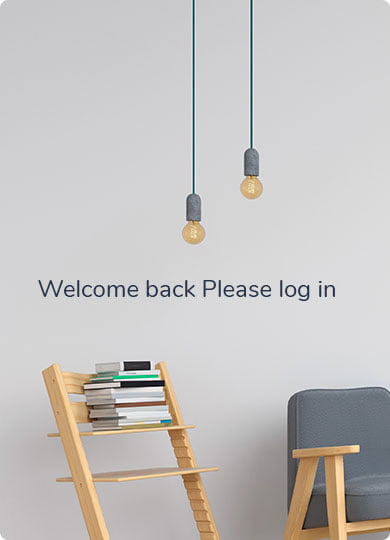

 Step 2: Plan Your Layout and Design
Step 2: Plan Your Layout and Design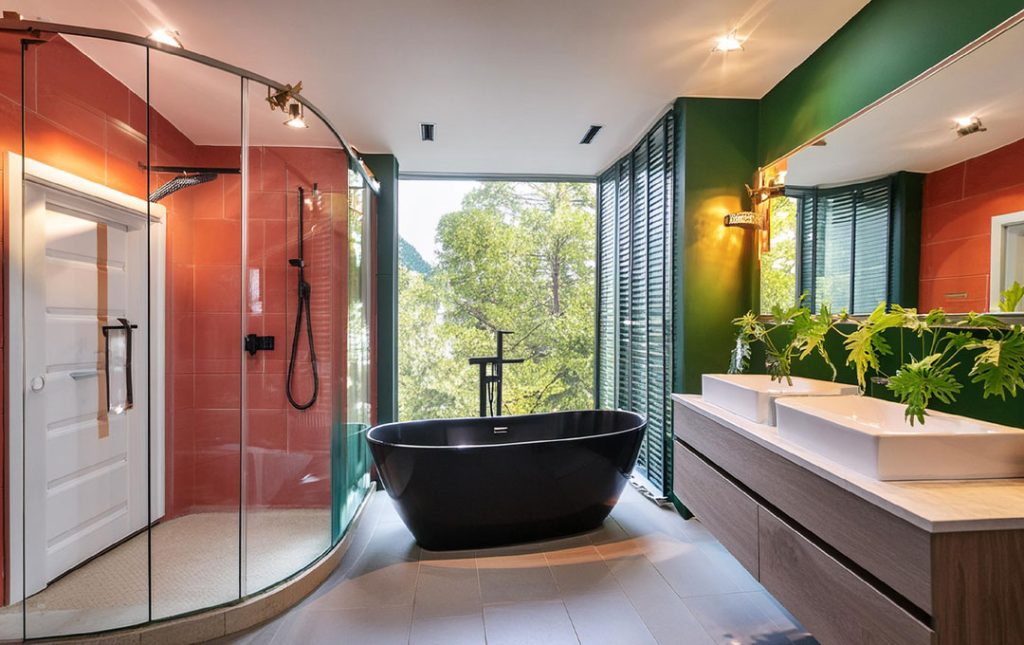 Step 4: Obtain Permits and Order Materials
Step 4: Obtain Permits and Order Materials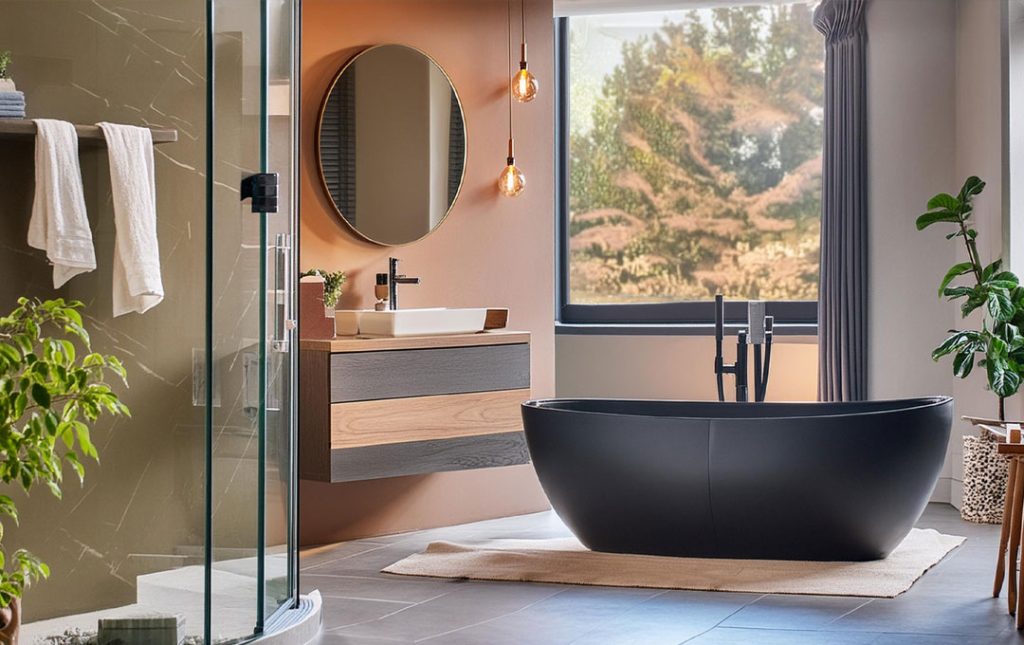 Step 5: Demolition and Construction
Step 5: Demolition and Construction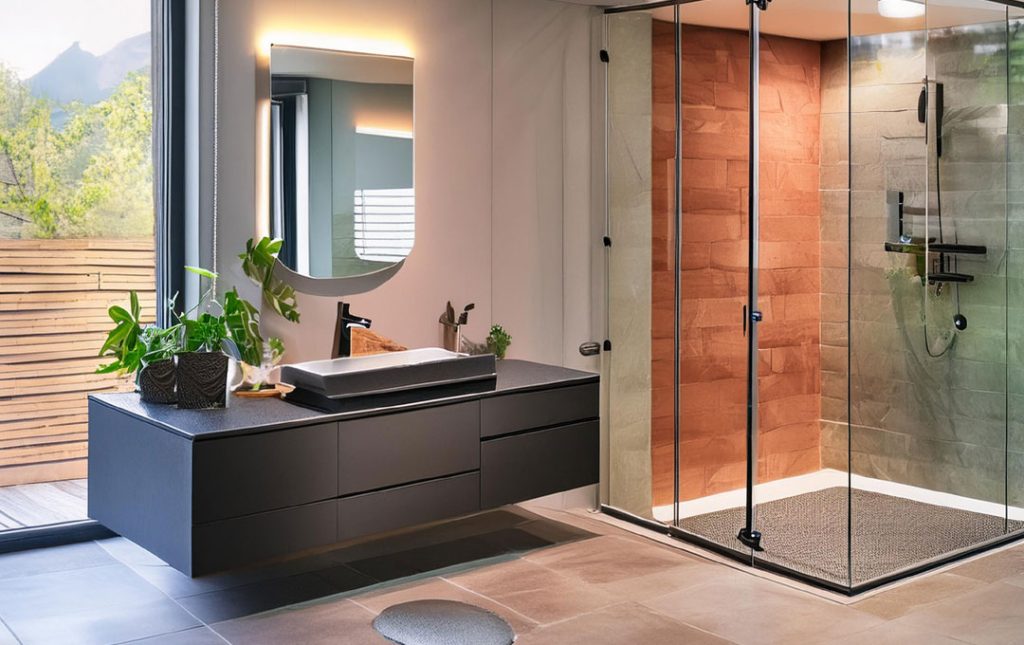 Conclusion
Conclusion